It can happen to the best of us. You start some rice, get distracted, and pull it out too early or too late.
Taking a bite, you find out that you’ve got hard rice or worse – it’s burnt! What can you do?! Well, the first step is going to be to relax.
Today, we’re going to share some tips on how to fix hard rice in various stages of petrification.
We’ll cover the range from ‘almost raw’ right up to ‘burnt crispy’ and with a little luck, your rice is going to come out just fine. Let’s talk about how to fix it even if it’s as hard as uncooked rice… or at least how to salvage most of it!
Bottom Line Up Front
Ultimately, if it’s undercooked, we’re going to cook it for longer with one of the methods we’ll detail below.
This could require adding a little water to continue the boil or possibly switching to a pan fry after a nice simmer. In the cases of burnt rice, we might employ methods such as the ‘Sin eater bread trick’ or simply try to mask or compliment the added smoky ‘flavor’.
Simply put, we finish cooking it or get creative with rice-salvage operations!
Methods for fixing hard or crunchy rice
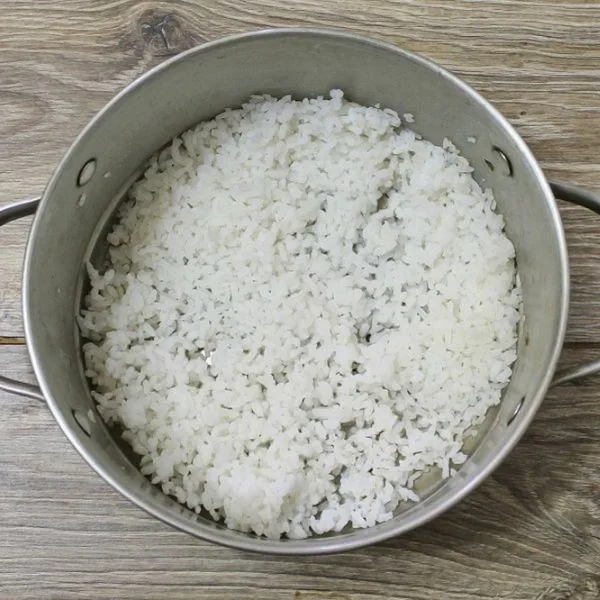
Now that we’ve set some expectations and delivered ‘preview data’ in our Bottom Line Up Front, it’s time to elaborate on how you can fix hard rice and deliver the easy-but-effective techniques.
With rice, you’re really kind of lucky when it comes to trouble, as there’s just so much that you can do with it. So, with that in mind, let’s look at some rough rice remediation tactics that can surely save your snack!
Fixing dry rice that still has a little water
This is the easiest scenario to fix. The cooked rice isn’t burnt, you’ve still got a little water, and now you have the decision to make. At this point, you want at least ¼ cup of water to be present, as we’re going to want to continue the cook for about 5 minutes.
You can spoon a bit aside and ‘eyeball’ it, adding a very small amount of water if you feel that it needs it, or if you HATE when the rice is overly hydrated, then you can run the rice through a strainer and then add ¼ cup of boiling water to your instant pot (and you can add a crushed cube of your favorite bouillon if you like to spice things up – your call.
After cooking for 5 minutes, remove the rice from the heat and let it sit for another 10 to absorb what it can. If it’s still a little tough, then repeat the process with slightly less water and the second attempt should work like a charm.
Fixing dry rice when the water is all gone at the end of your cook
If the water is all gone, simply add a ¼ cup of water and perform the steps that we just outlined for watery rice, and you should be okay. As long as it’s not burnt yet, you’ll be fine — it just takes a little patience and low heat and as long as you don’t rush it, your rice will be just fine.
Fixing chewy but not-quite-done rice
If your rice is ‘sorta cooked’, so that it’s turned to ‘chewy, but not quite raw’’, then first things first – if a friend is there, don’t call it ‘sorta cooked, so that its turned to chewy… etc.’, but rather go with ‘This rice is al dente’ as you nod sagely and continue your cook.
While you hear that ‘al dente’ a lot regarding pasta, technically it applies to undercooked rice as well, so don’t be afraid to mask your discomfort at undercooking the rice with some flowery terminology just to save a little face!
The fix is going to be the same – your rice is undercooked, so you need to add water and keep cooking it or reheat rice. Aside from using water, however, if you have a microwave then it’s much safer to simply use our next method.
Fixing hard rice with the microwave method
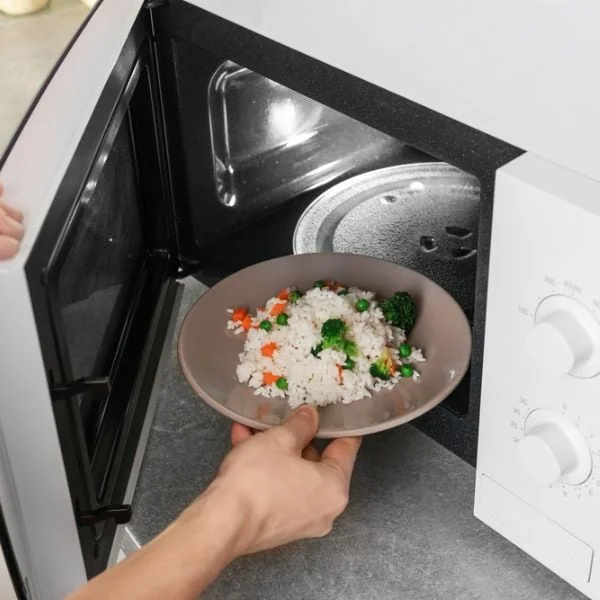
It’s hard to burn rice in the microwave and I know… I’ve tried and let’s just say that I spent a large portion of my childhood and early teenage years grounded for ‘Microwave Mad Science’ and we’ll leave it at that.
As far as softening rice, however, microwaves are excellent for this task. There are two ways to go about it and we’ll start with the easiest first.
Method 1
- Get a microwave-safe plastic container with a lid, add a 1.4 cup of water and mix it well, and then put the lid on it and place it in the microwave.
- Start with a 5-minute session and then check your rice – open it carefully with gloves, though, or you’ll get scolded. When you microwave rice with water, it creates steam to cook that unfinished rice to perfection, but it’s going to blast you with that same steam if you aren’t watching for it.
- If the rice is done at this point then you can serve it, or if it needs more time but you’re worried, then just set it to half-power and try another 5 or even 10 minutes. Don’t worry – you can check it any time – and your rice will soon be perfect.
Method 2
Rice cooks so well in the microwave that there are products you can add to your kitchen arsenal to take advantage of this.
This Sistema microwave rice cooker and steamer bowl is a fine and inexpensive example. It’s made of Phthalate and BPA-free plastic and while it’s not as cool as a rice cooker if you don’t have the space for one then this is a nice little alternative to have.
Just be sure to follow the included instructions and with the extra time that you save by clearing up another stove spot, you can whip up a dessert or an extra side!
Softening-up hard rice with a conventional oven
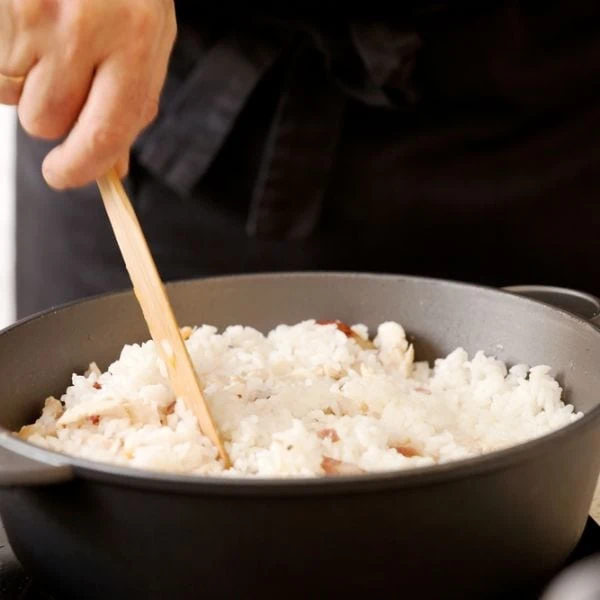
If you are a traditional cook who would never deign to have a microwave in their kitchen, or simply fancy fixing your rice and then perhaps melting some cheese on top, then why not bake hard out of that rice?
The steps are simple but effective, and go a little like this:
- Preheat your oven to 350 degrees and while it’s heating up, check your rice to make sure it’s not a little ‘gummy’ or has become mushy rice. American rice is treated with added nutrients and starch, and if it’s sticky now then it will likely come out ‘gummy’ later if we don’t act now. If it’s sticky, rinse it in a sieve now.
- Once the rice is rinsed (which you don’t need to do if it’s not sticky or overcooked rice), then spread it into a glass baking dish and give it 10 minutes in the oven.
- Check your rice – if it’s tender, you can take it out, or sprinkle a bit of cheese on top and upgrade it!
Turning undercooked rice into delicious fried rice
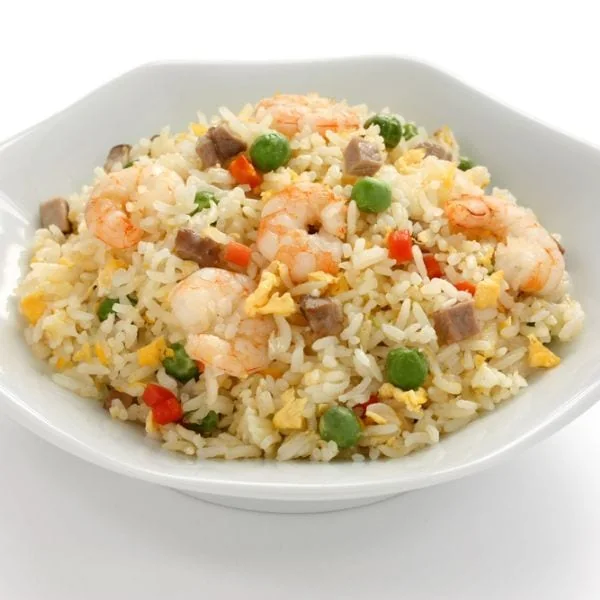
There’s always another way to salvage your rice if you’re determined and if I’m going to make an extra effort, this method is usually my go-to solution – changing rails and frying the rice to new levels of deliciousness.
While fried rice is certainly not heart-healthy, if you don’t do this all of the time, then you can certainly use that undercooked rice as an excuse THIS TIME to fry it up right. Here’s what you need to do:
- Transfer your rice to a frying pan and mix in 1 cup (or a little more, you’ll have to use your best judgment on this one) of your favorite broth.
- Heat to a simmer and cover, until the liquid is soaked in and your rice is tender.
- Optional: Before cooking the rice, you can always fry up 2 eggs and 2 strips of bacon, giving both a rough chop to render them into tiny, delicious bits. Add these with some chopped shallots and maybe a bit of broccoli and put this in the rice before simmer-time.
- Also optional: Add a little soy sauce if you like!
Fixing slightly crispy rice
If you’ve got a little crisp browning or only slight scorch at the bottom and the rest of the rice is undercooked, then you can fix it before it becomes a problem. The easiest way is to transfer the unbrowned rice to another pot and add ¼ cup of hot water (or better, boiled) water and continue the cook.
You can also go at it with a wooden spoon and simply mix the browned bits in with the rest. In some cultures, a little brown rice or even slightly scorched rice is a good thing. It’s crunchy and tastes a little nutty, so don’t be afraid to mix it in your current batch to see if you like it.
If you do, look for recipes for Guoba (Chinese scorched rice) or Persian Tahdig (browned-bottom rice, often mixed with yogurt) and dedicate a little time to exploring these delicious dishes. You might just discover a new favorite food.
Fixing rice with a flat-out burnt bottom
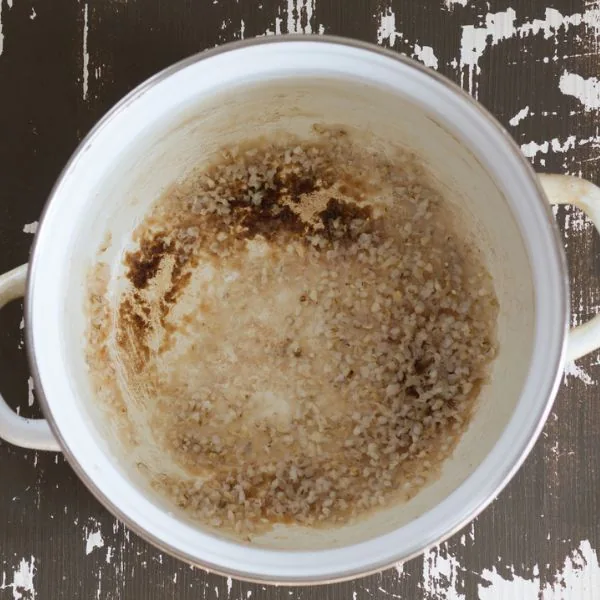
Before proceeding, I’d like to point out that the efficacy of this method will depend on the level of burn. Sometimes, it’s simply too burnt, and that flavor will pervade the cooking rice to an extent that you just have to start over or settle for a sandwich.
That said, for a little bit of burning, you can do a trick I’ve dubbed the ‘Sin eater bread trick’.
Way back in the 18th and 19th centuries, a tradition arose that we believe came from Wales originally, but which was practiced in Wales, England, and Scotland. When someone died, there was one person in the village who would sit for a night vigil to perform a job that was rather… well, unpleasant.
You see, a loaf of bread would be placed on the clothed chest of the deceased, and a little salt was added on top as it was considered pure and holy. This practice was believed to ‘soak up their sins’, which would then be ‘eaten’ as the poor Sin eater consumed the bread to take the sins onto themselves.
Thus, the deceased would arrive in the afterlife ‘squeaky-clean’, while the Sin eater presumably daydreamed a lot about how much worse they’ve just made their own.
As it turns out, you can do something similar and much less macabre with that burnt rice!
The trick to it is as follows:
- Transfer your unburnt (but stinky) rice to another container, so that the scorched bottom will stop adding more scent molecules and fouling up your rice.
- Place 1 or 2 pieces of white bread on top of your hot rice and leave them there for 5 to 10 minutes. With a little luck, they’ll absorb the ‘sin’ of overcooking by taking on the lion’s share of those stinky ‘burnt flavor’ molecules and you can promptly dispose of them.
If this doesn’t do the trick then you may well have overcooked it too much, although if there’s only a small amount of scorchy flavor then you can always go with strong flavor additions in an attempt to pleasantly ‘overwhelm’ it or to complement it.
Garlic butter oil, vinegar, and a little soy sauce – you might have to get creative. A little pan-seared beef, chicken, or pork and bbq sauce can also sometimes convert it into ‘smoky barbecue rice’ instead of an unfortunate cooking accident.
You’ll just have to judge the degree and give it your best, but sometimes you’ve just gotta take the hit to your pride and start over.
FAQ
What else neutralizes burnt flavor?
With rice and a lot of other dishes, sometimes a tablespoon of honey can take the edge off of the burnt flavor. A little white or brown sugar can do the same and a small amount of molasses works quite well in a pinch.
Is it good to eat scorched rice?
Well, technically, YES it is. That’s because the scorched bits are high in carbon and this is believed to help give you an immune boost, but also it can have detoxifying effects.
If you eat something poisonous on accident, the first thing that doctors will usually give you if you’ve gotten there quickly is activated charcoal.
Still, it’s best to only eat ‘slightly scorched’ rice, as this is tasty – you get a little crunch and it tastes nutty. Avoid eating rice that has been burnt completely black.
It won’t taste good and there are certainly easier ways to get a little beneficial carbon if that’s your aim.
What is socarrat for paella?
We mentioned Guoba and Tahdig, but those aren’t the only foods where a little scorched rice is considered a bonus.
When making paella, you want a little socarrat, which is simply the crispy rice at the bottom that helps to perfect its flavor. A little burning really isn’t always as bad as you think!
Conclusion
Today we have talked about how to fix hard leftover rice and as you can see, it’s all a matter of finishing the cook or working with the burnt flavor if that’s going to be possible. While it’s unfortunate, every now and then the damage is simply done and you can’t fix it, but you’ve usually got a few things that you can try first.
By placing 1 or 2 pieces of bread on your burnt rice, you may be able to absorb a lot of the burnt flavor, and if that doesn’t work you can always get creative with the spices or try to convert it to fried rice and hope the bouillon helps.
With a little luck and the recommendations we’ve shared in this article, you’ll usually be able to salvage your rice and get on with your day, but if that’s not in the cards then don’t worry.
Swallow your pride, clean your pan, and you’ll have a new and BETTER batch ready in 15 minutes flat!





David learned to cook at an early age after his mother told him that he couldn't live on pizza forever, Dave uses his modest kitchen skills to recreate sorely-missed recipes from home and to occasionally make new favorite ones from places he is visiting.